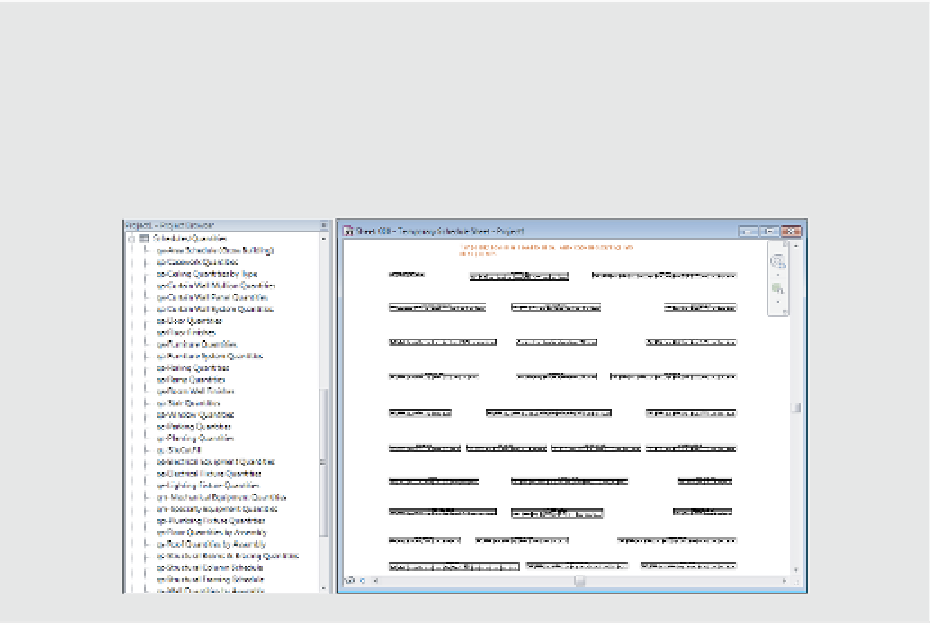Graphics Programs Reference
In-Depth Information
adjustments in the Project Browser. In addition to verifying that the correct content has been
utilized throughout your project, you can check the Count field for rows where a small number
of elements have been placed—perhaps indicating that a family has been placed in error.
discover a Bundle of Schedules
did you know that there are some valuable elements hidden in project templates provided by
autodesk? if you create a new project file using the construction-default template, you will find
many schedules related to quality assurance (Qa) or quantity surveying (Qs). There is also a sheet
named 000 - Temporary schedule sheet, from which you can copy any number of schedules and
then paste them into your own project.
Keynotes
As a final example illustrating the use of schedules to manage the consistency of a project, we'll
discuss how to use keynotes in the construction document process. Regardless of whether
you use numerical keys or text-based keys, you will invariably need to use one of them to add
annotations to your project. Although the software can easily produce both types of annotation,
for the sake of ease and consistency we will refer to them as
keynotes
for the remainder of this
section because that is the name of the Revit command.
If you are keynoting a project, you are adding annotations that call out specific materials
or conditions within your details. Those notes not only need to be consistent across multiple
details, but they will also link directly back to the project specifications—a separate set of
documents published outside of the Revit environment. Historically on a project, to maintain
any sort of consistency between notes in different views, you needed to manually coordinate
all the notes and manually check them. When you are talking about hundreds of sheets in a
drawing set and thousands of notes, there is plenty of room for error. In a manual process, you
can have notes on one sheet that read “Cast-in-Place Concrete,” while on another sheet they read
“CIP Concrete,” and on a third sheet “Cst in Place Conncrete” (note the typos).

















